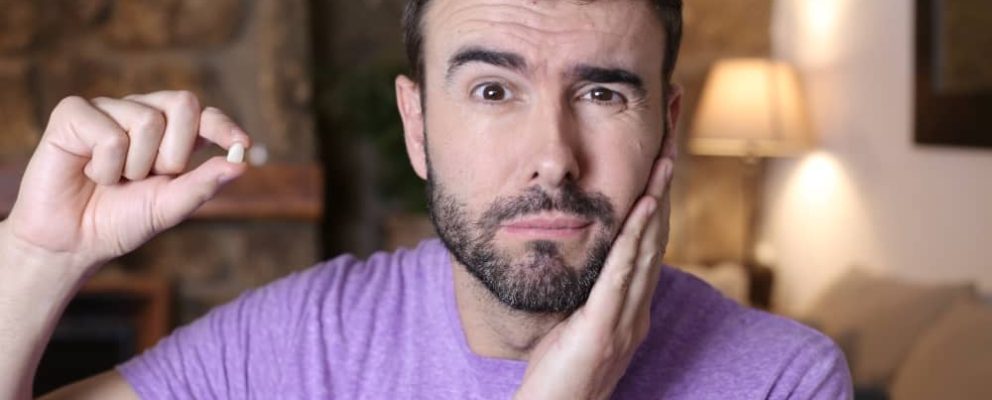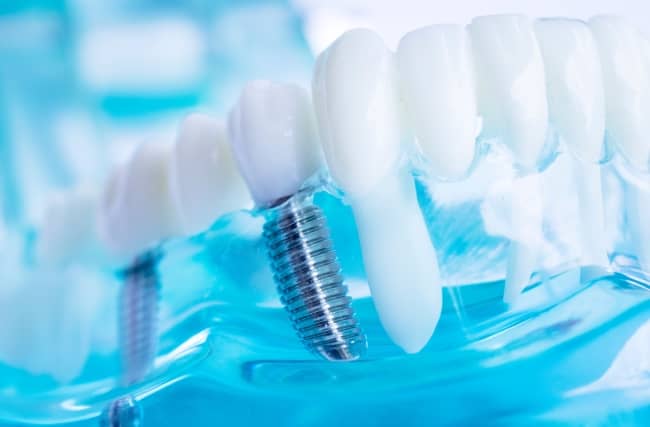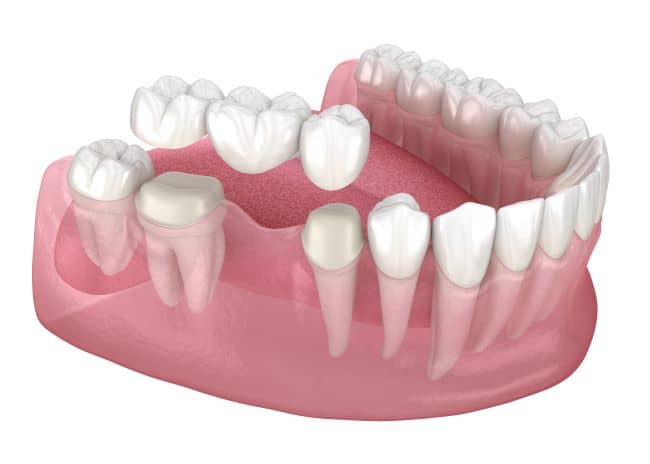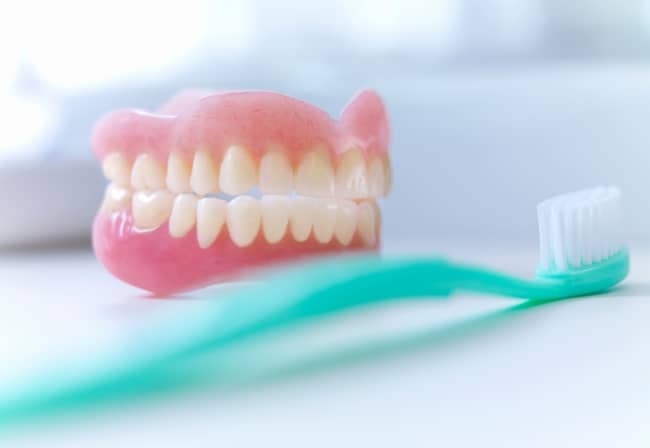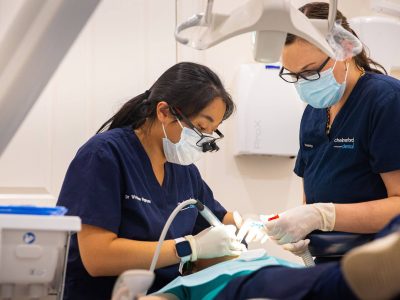Along with a reduction in confidence, a missing tooth can have serious health consequences, including jaw bone shrinkage and shifting of the surrounding teeth.
Fortunately, there are a variety of effective solutions for replacing missing teeth. Here, we’ll discuss the different treatments for replacing missing teeth, along with the pros and cons of each.
What Are the Different Ways to Replace Missing Teeth?
1. Dental Implants
Dental Implants are a highly effective option for replacing missing teeth. Dental implants involve a metal artificial tooth root surgically implanted into the jawbone.
Upon healing, the tooth root becomes integrated into the jaw and acts as a secure attachment for a dental crown, denture, or bridge. The result is a replacement tooth that matches surrounding teeth and functions just like a healthy natural tooth.
Further, dental implants stimulate the jawbone, helping to prevent bone deterioration that can accompany a missing tooth. When properly maintained, dental implants are one the longest-lasting, most efficient options for replacing missing teeth.
Pros of Dental Implants
- Offer an extremely high success rate
- Offer a long lifespan (potentially permanent when cared for properly)
- Highly durable
- Look, feel, and function just like natural teeth
- Require minimal maintenance (follow a good oral hygiene routine and see your dentist for regular checkups)
Cons of Dental Implants
- Requires a surgical procedure
- Requires several visits to the dentist
- Can be more expensive than other treatments for missing teeth
- Requires healthy surrounding teeth and gums, as well as proper jawbone integrity
- The replacement tooth cannot be secured until the dental implant has had time to integrate into the jaw and completely heal
2. Dental Bridges
Dental bridges involve creating a bridge that spans the gap left behind by a missing tooth or teeth. The dental bridge typically gets secured to surrounding teeth, known as abutment teeth. These teeth get shaped to hold a crown that will support the bridge and span the gap.
There are four types of dental bridges:
- Traditional Fixed Bridges — Traditional fixed bridges fill the gap between two healthy surrounding teeth. The adjacent teeth are reshaped and fitted with crowns to support the dental bridge between them. This common dental bridge type is made from ceramic or porcelain material fused with metal.
- Cantilever Bridges — If you have a single tooth missing in the middle or front of your teeth, a cantilever bridge may be an ideal option. Cantilever bridges involve placing a crown on one side of the healthy adjacent tooth to support the bridge.
- Maryland Bonded Bridges (Resin-Bonded Bridges) — A Maryland Bonded Bridge involves a floating tooth that replaces the missing tooth. Using the metal framework, a Maryland Bonded Bridge gets attached to existing teeth. It involves less reshaping than fixed dental bridges since it does not involve the use of crowns.
- Removable Bridges/ Partial Dentures — Removable dental bridges are customised with a plastic base that matches the gums and gets secured with metal clasps to nearby teeth. Removable bridges are more affordable than dental implants or fixed bridges but offer less security and durability.
Pros of Dental Bridges
- Look and feel just like natural teeth to restore confidence and function
- Help support chewing and the ability to speak clearly
- Help maintain the shape of the face
- Can prevent the surrounding teeth from shifting
- Can be pricey but are typically more affordable than dental implants
Cons of Dental Bridges
- Involves the alternation of surrounding teeth
- An ill-fitted dental bridge may damage surrounding teeth over time
- Not ideal for use in the back of the mouth due to greater bite force
- Can be difficult to thoroughly clean underneath the dental bridge, leading to a higher risk of decay
- Requires strong supporting teeth to attach to
3. Dentures
Dentures often referred to as false teeth, are prosthetic devices held in place by the gums and hard and soft tissues of the mouth.
Dentures come in two types:
- Complete Dentures for individuals who have lost all their teeth
- Partial Dentures for individuals who still have some remaining teeth (partial dentures include replacement teeth attached to a plastic base that matches the colour of your gums)
Pros of Dentures
- More affordable than other tooth replacement options
- Can improve the look of your smile and allow you to speak and chew comfortably again
- Can be taken out to clean
- Can cause sore spots if not properly fitted
- Can become less secure with time
- It may take time to adjust to
- Fragile and susceptible to damage if dropped or mishandled
- It may require higher maintenance than other tooth replacement options
- Can shift with time as the jaw and face shape naturally changes, requiring ongoing adjustments and evaluation
Have Questions About Replacing Missing Teeth?
There are several effective options for replacing missing teeth. At Chelmsford Dental, we’ll work closely with you to determine the solution that fits your exact needs. We’ll evaluate the health of your teeth and gums and the integrity of your jawbone to develop an effective, long-lasting solution.
We’re here to help you have a healthy, functional smile you can be proud of. Contact our caring team with any questions or to set up a consultation.
